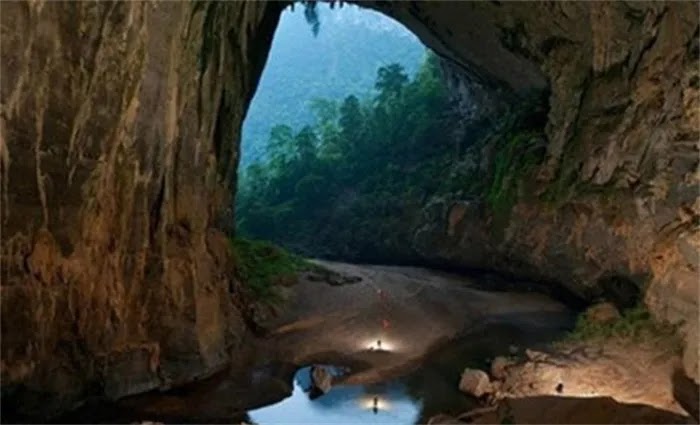The Scariest Place in the World: Exploring the Dark Corners of Fear
The Scariest Place in the World
When it comes to seeking thrills and chills, there is no shortage of destinations around the globe that claim to be the scariest place in the world. From haunted houses and abandoned asylums to eerie forests and haunted castles, these spine-tingling locations have captured the imaginations of brave adventurers and thrill-seekers alike. However, there is one place that stands out among the rest, a place that has earned its reputation as the epitome of fear and dread. Welcome to the scariest place in the world—where nightmares become a chilling reality.
The scariest place in the world is not a physical destination that you can pinpoint on a map. It is a realm that exists within the depths of our own minds—the realm of fear. Fear, as primal as it may be, is a universal experience. It is an emotion that can paralyze us, drive us to the edge of sanity, and make us question our very existence. The scariest place in the world is not a tangible location; it is a psychological state that can manifest itself anywhere, at any time.
However, there are certain places on Earth that seem to evoke fear more than others. One such place is the Aokigahara Forest in Japan, commonly known as the Suicide Forest. Located at the base of Mount Fuji, this dense woodland has become infamous for the high number of suicides that occur within its boundaries. The eerie silence that permeates the forest, combined with the sight of countless abandoned personal belongings and the lingering presence of lost souls, creates an atmosphere of profound unease. Visitors who venture into this haunting forest often report feeling an overwhelming sense of dread and despair, as if the very fabric of reality has been tainted by sorrow and anguish.
Another contender for the title of the scariest place in the world is the Catacombs of Paris. Deep beneath the bustling streets of the French capital lies a labyrinth of tunnels and chambers, adorned with the bones and skulls of millions of deceased Parisians. These macabre arrangements create an otherworldly atmosphere that is both awe-inspiring and chilling. The air is thick with an eerie silence, broken only by the faint echoes of footsteps and the occasional drip of water. The sheer vastness of the catacombs, combined with the knowledge that you are surrounded by the remains of countless individuals, instills a sense of existential dread that is hard to shake off.
Moving away from the physical realm, the scariest place in the world can also be found in the virtual space—the realm of horror movies and video games. Whether it's exploring the haunted halls of the Overlook Hotel in "The Shining," navigating the nightmarish streets of Silent Hill, or surviving the zombie-infested world of "Resident Evil," these fictional worlds have the power to elicit fear and terror in ways that few other mediums can. The immersive nature of virtual reality and the ability to place ourselves directly in the shoes of the protagonist amplifies the fear factor, making us question our own safety and sanity.
Beyond the specific locations mentioned, it is important to acknowledge that the scariest place in the world is subjective and deeply personal. What may terrify one person might barely faze another. Fear is a deeply individual experience, shaped by our past traumas, cultural influences, and personal phobias. For some, the scariest place in the world may be a small, dimly lit room with no windows, evoking feelings of claustrophobia and helplessness. For others, it could be standing on the edge of a towering cliff, feeling the pull of gravity and the fear of falling. The scariest place in the world is as diverse as the human experience itself.
Moreover, the scariest place in the world doesn't always have to be a physical location or an external environment. It can reside within our own minds, fueled by our deepest fears, anxieties, and insecurities. The scariest place can be the dark recesses of our thoughts, where our worst nightmares come to life. It can be the haunting memories that refuse to fade, the phobias that grip us with an iron fist, or the relentless anticipation of the unknown.
In a broader context, the scariest place in the world can be seen as a metaphor for the challenges and uncertainties of life. It can represent the moments of vulnerability and facing our deepest fears head-on. It is in these moments that we often find ourselves pushed to our limits, questioning our courage and resilience. It is through these experiences that we grow and learn, ultimately emerging stronger and more self-aware.
The scariest place in the world is not static or fixed. It evolves and changes as we do, adapting to our shifting fears and vulnerabilities. It may be a reflection of our cultural anxieties, societal taboos, or personal traumas. It can manifest differently for each individual, depending on their unique experiences and psychological makeup.
For some, the scariest place may be a hospital room, where the fragility of life and the specter of illness loom large. The sterile environment, the beeping machines, and the hushed whispers create an atmosphere of unease and vulnerability. Others may find the scariest place in the world to be a deserted, desolate landscape, where isolation and the absence of human presence evoke a primal fear of the unknown.
The scariest place can also emerge from supernatural beliefs and urban legends. It can be a purportedly haunted house with a dark history, where the echoes of past tragedies and malevolent spirits linger. Or it can be a cursed object that carries a sinister aura, instilling a sense of dread and impending doom in those who encounter it.
Furthermore, the scariest place in the world can extend beyond the physical realm and delve into the realm of existential fears. It can be the deep, existential crisis that arises when contemplating the vastness of the universe and our insignificance within it. It can be the terror of confronting our own mortality and the fleeting nature of our existence. The scariest place can be the abyss of the unknown, where we grapple with questions about the meaning of life, the nature of reality, and the limits of human understanding.
In the end, the scariest place in the world is a deeply personal and subjective experience. It is shaped by our individual fears, traumas, and perceptions. It can be found in the physical world, the recesses of our minds, or the existential realm. It reminds us of our vulnerability, but also of our capacity for resilience and growth. It challenges us to confront and overcome our fears, to push the boundaries of our comfort zones, and to embrace the unknown with courage and curiosity.
So, whether it's a notorious location with a dark history, the depths of our own psyche, or the uncharted territories of existence, the scariest place in the world beckons us to explore, to confront our fears, and to discover the untapped depths of our own strength. It is a reminder that fear, though unsettling, can be a catalyst for personal transformation and a gateway to profound self-discovery.
In conclusion, the scariest place in the world is not a singular, tangible location. It is a concept that transcends physical boundaries and dwells within the realm of our deepest fears. Whether it's a foreboding forest, a haunting catacomb, or the depths of our own minds, the scariest place is a testament to the power of fear and its ability to shape our perceptions and experiences. It reminds us that fear, although unsettling, is an integral part of the human condition and a catalyst for personal growth and transformation. So, embrace the fear, confront the unknown, and discover the strength that lies within the scariest place in the world.







